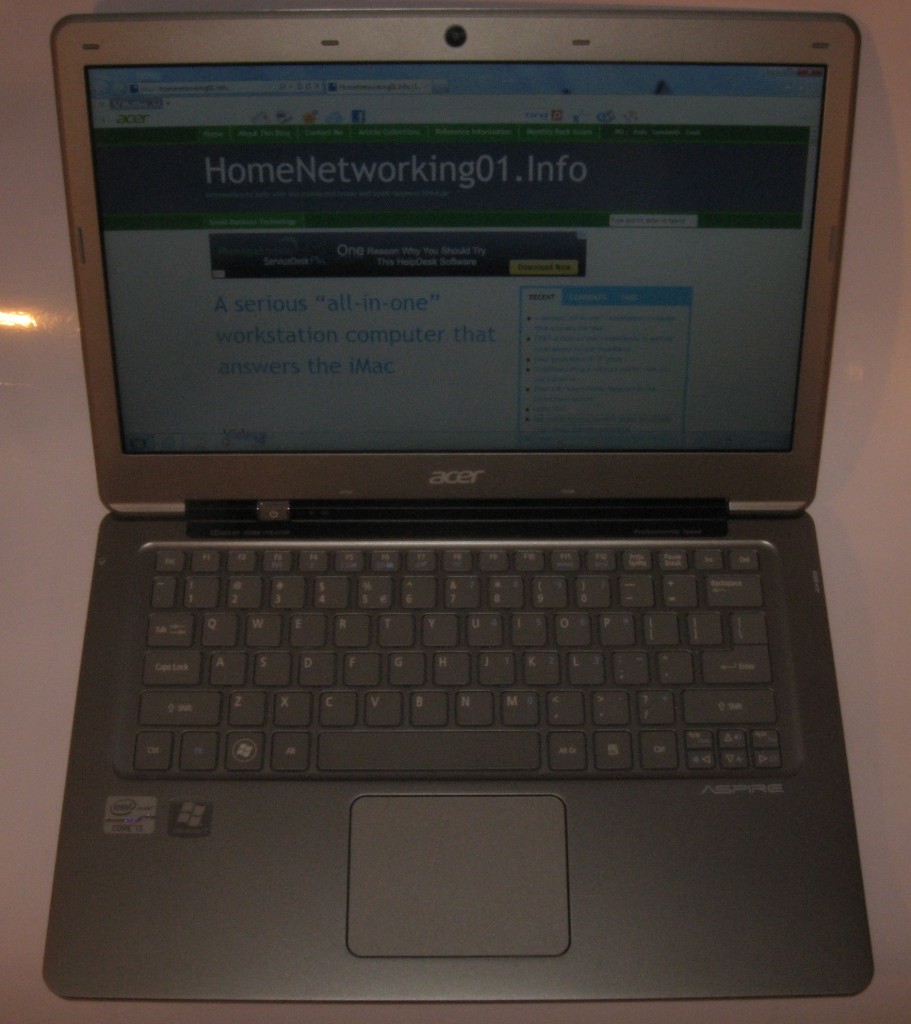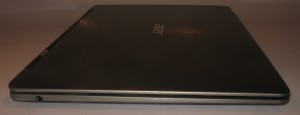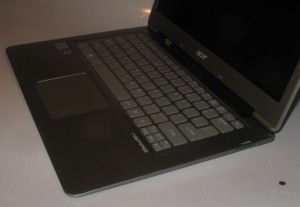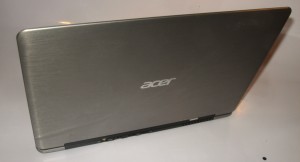Product Review–Acer Aspire S3 Series Ultrabook (Model S3-951-2464G34iss)
Introduction
Previously, I have given regular coverage on the “Ultrabook” notebook computer concept on this site ever since Intel launched the concept to standards-based computer manufacturers. Now I have been given the first opportunity to review a computer that is part of this product class, in the form of the Acer Aspire S3 Series.
The series is available in different configurations with the cheapest unit being equipped with an Intel Core i3 processor and 320Gb hard disk, with other machines equipped with an Intel i5 or i7 processor and the option of a 500Gb hard disk or a 256Gb solid-state drive. The unit I am reviewing is the S3-951-2464G34iss which is equipped with the Intel i5 processor and a 320Gb hard disk for its main secondary storage.
| Price – this configuration |
AUD$1199 | |
| Processor | Intel Sandy Bridge Core i5 –2467M processor | Cheaper option – Intel Core i3-2367M processor Extra cost option – Intel Core i7-2637M processor All Sandy Bridge processors |
| RAM | 4Gb RAM | shared with graphics |
| Secondary Storage | 320Gb hard disk + 20Gb solid-state drive Extra cost options: 500Gb hard disk + 20Gb solid state drive 256Gb solid state drive |
SD card reader |
| Display Subsystem | Intel HD | |
| Screen | 13.3” widescreen (1366×768) | LED-backlit LCD |
| Network | Wi-Fi | 802.11g/n |
| Bluetooth 3.0 | ||
| Connectors | USB | 2 x USB 2.0 |
| Video | HDMI | |
| Audio | 3.5mm stereo audio output jack Digital out via HDMI |
|
| Operating System on supplied unit | Microsoft Windows 7 Home Edition |
The computer itself
Aesthetics and Build quality
The Acer S3 Ultrabook has a very lightweight feel about it and is in a thin metal housing. This svelte thin feel has allowed me to keep it in a shoulder bag and take it around town without noticing any extra weight in that bag.

Rear view with 2 x USB 2.0 connectors, HDMI output connector and power connector - demonstrating its slimness
There is a small rear-facing ventilation grille on the back to cool the Ultrabook down but it can become too hot towards left of the unit on some occasions.
User interface
The Acer Aspire S3 series Ultrabooks are equipped with a regular-sized hard-plastic chiclet keyboard. This has a “hard” typing feel which gives a good physical feedback that is conducive to touch-typing and the user’s hands don’t feel “crunched up” when typing up content and they can type very quickly on it.
There is the regular trackpad but this isn’t marked out with primary or secondary buttons and can be very confusing to use, especially if you move from the Apple Macintosh.
Storage, Connections and Expansion
The Aspire S3 Ultrabooks have two USB ports for use with external peripherals as well as an HDMI output jack for external displays and a 3.5mm audio output jack. You would have to use a USB-VGA DisplayLink adaptor or the HDFury HDMI-VGA adaptor to connect this Ultrabook to those economy data projectors that don’t have a DVI or HDMI input.
The notebook can connect to Wi-Fi networks but doesn’t have an Ethernet socket for other network setups. You could get around this with a USB-connected Ethernet network adaptor.
There is no need to think that the cheaper hard-disk-equipped variants of this Ultrabook series will take a long time to start because they have a regular hard disk. This unit still comes to life very quickly due to the use of a 20Gb solid-state drive that is used to store what it needs to start with such as the “image” of your last computing session or the boot requirements for Windows 7.
Audio and Video
The Acer S3’s audio quality from the internal speakers does still have that tinny sound due to the Ultrabook’s slim chassis but can yield an output volume similar to a small portable radio. I would recommend that if you want more from the sound for music, video or games, you would have to use headphones, external speakers or a sound system.
The Intel integrated video does work well for most tasks including basic photo and video editing and is gentle on the batteries; and the maximum screen resolution is appropriate for the Ultrabook’s screen size.
The glossy screen can, at times, be very distracting but the display was able to be sufficiently bright to allow for indoor and outdoor work while it was on batteries.This is something I have observed when I used the Ultrabook “on the field” while in Sydney.
Battery life
The Acer Aspire S3 was able to complete approximately 2 days off the charger with ad-hoc online use including uploading images to Social Web via Wi-Fi. Unlike most laptops, there isn’t the ability to force hibernation – the Ultrabook goes to a “deep sleep” after 8 hours or can be set to enter this mode after 2 hours through the use of an Acer-supplied app.
Other experience notes
Use while travelling
This review is integrated with a visit to Sydney where I have been staying with some close friends of mine and I have been assessing the Ultrabook form factor’s prowess with travel conditions through the trip.
The Acer Aspire S3 Ultrabook’s size allows you to work comfortably in a typical economy-class airline seat without any problems. This can work well in the favour of those who do regular business or leisure air travel, in a manner similar to the scene in “ABBA The Movie” where the journalist who was chasing ABBA was typing up his notes on a portable typewriter in his economy-class seat on the aeroplane.
For example, I was editing some of this copy with this notebook on the airline tray table through most of the Virgin Australia flight to Melbourne and was able to have room for a cup of coffee in its proper cup-rest position on that table. When I had to stow the Ultrabook away during takeoff, I could store it in the seat pocket in front of me without it looking obnoxious.
Experience with other people
A comment that I had received about this Acer S3 Ultrabook was that the lady of the house where I was staying at during the Sydney trip described the computer as being thin and beautiful to look at. Others who have seen this notebook have been simply amazed at how slim this computer is.
Limitations and Points Of Improvement
I would also look at replacing one of the Aspire S3’s USB 2.0 sockets with a USB 3.0 socket. This could allow high-speed throughput with external hard drives and cater for the development of a “home” accessory with an integrated optical drive, Gigabit Ethernet connection and extra USB 2.0 / 3.0 ports as an extra-cost option.
As well, it could benefit from a dedicated hardware button that turns the Wi-Fi and Bluetooth transceivers on and off, thus enabling a “flight-mode” option that you can quickly enable when you get on the plane.
Because these Ultrabooks are lightweight and easy to steal, I would also recommend making sure that the S3 Series are equipped with a Kensington-compliant locking slot as well as any software-based locking setup.
Conclusion
I would recommend the Acer Aspire S3 series Ultrabooks as an lightweight auxiliary travel computer, especially if you are creating content on the road but don’t want all the extras like a DVD burner. This is due to the keyboard being more conducive to full quick text entry like liveblogging, live social-media feeds and the like.
The cheaper model would suit those of us who are on a budget while this i5 model would please most of us who want some snappiness for “rough-editing” average size photos and video footage. The variants with the solid-state drives would please those who are after quick performance while the hard-disk-equipped models would suit those of use who want “field” storage for the photos that we take.






